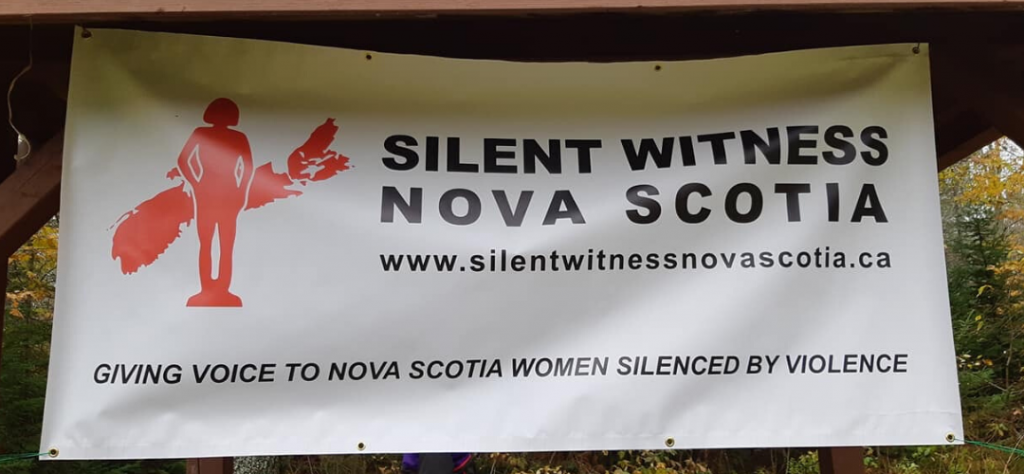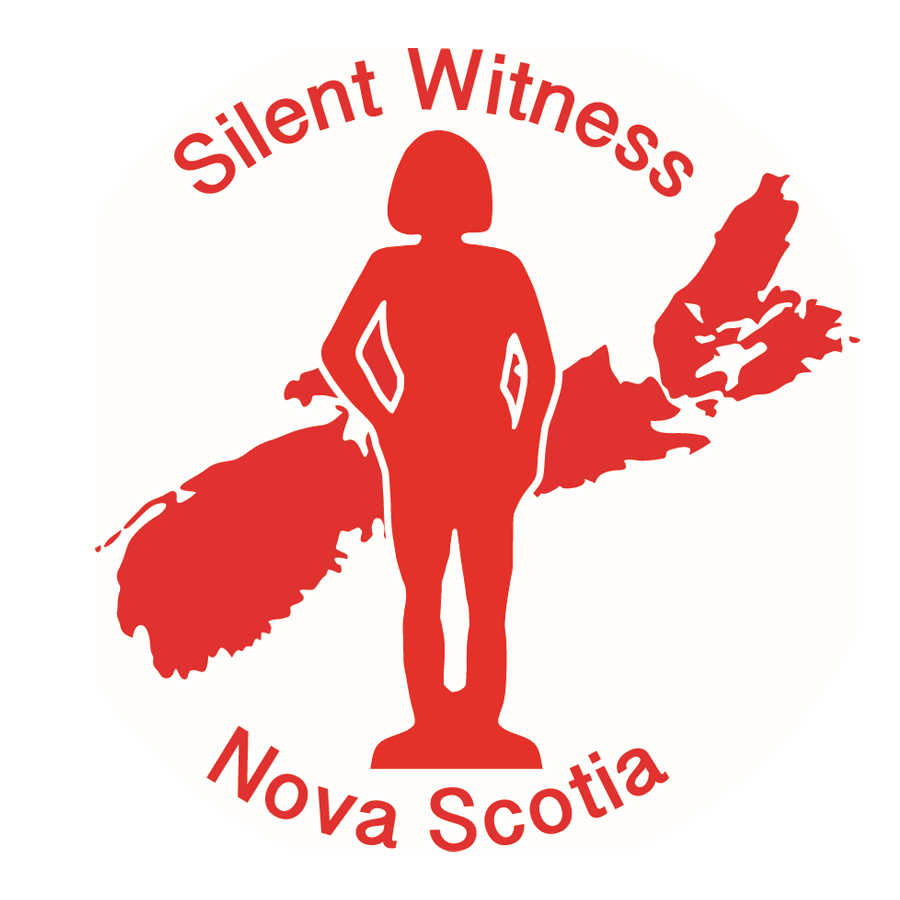About Silent Witness Nova Scotia
Between 1990 and 2018, there were 62 women in Nova Scotia who lost their lives to violence at the hands of their intimate partners, forever silencing their voices. The time has come to end their silence.

How Silent Witness Nova Scotia began
Silent Witness Nova Scotia is a group of organizations and individuals working together to raise those voices. Our journey began on February 12 2003 when Metro Interagency Committee on Family Violence hosted a presentation by the New Brunswick Silent Witness Project in Halifax. Individuals across the province gathered to learn about the Silent Witness movement, and New Brunswick women who had been killed by their intimate partners.
A list of 30 names of who was interested in forming Silent Witness Nova Scotia was collected that day. We were so moved by their stories that a commitment was made to honour and remember our own Silent Witnesses in this way.
Unbeknownst to us, while the presentation was underway, Cecilia Julian was being airlifted to Halifax due to injuries resulting from domestic violence. She succumbed to her injuries later that night. Her partner was never convicted or her murder because he died of natural causes while awaiting trial in jail.
On February 13 when we learned of this news, a email was circulated among the presentation attendees sharing the tragedy of Cecilia Julian. 14 more names were added to the list of those who wanted to form Silent Witness Nova Scotia.
Our vision became clear; we would strive to give voice to women of Nova Scotia silenced by domestic violence and commemorate their lives.
How we create awareness and promote action
Life-sized, red, wooden Silhouettes are created, each to represent a murdered woman. Each bears a shield engraved with a description provided by her family, of her as a woman who was also a beloved mother, friend, sister, daughter, co-worker, etc.
We conduct domestic violence awareness presentations in schools, community colleges, universities and more. Silent Witness Silhouettes are an important part of these presentations.
Purple Barb’s Benches are placed in communities in honour of women who were murdered by their partners.
Training sessions are conducted for Department of Justice workers, law enforcement personnel, community social service providers as well as community groups.
Domestic Homicide in Canada
Between 1991 and 2018 in Canada, 1,856 women were victims of intimate partner homicide.
Although each woman has her own unique story, their deaths, together, reveal many common factors:
- Home is not a safe haven, nor is the workplace
- Occurs in all parts of the province, both urban and rural;
- In all ages, backgrounds and income levels;
- Occurs at all levels of intimate involvement;
- Ending a relationship does not end the risk of violence;
- Women leaving a violent relationship are often stalked;
- Younger women are more at risk of being killed by ex-partners;
- Women in common-law relationships are at a greater risk of family violence and murder;
- Drugs and alcohol can escalate the violence;
- Homes with firearms can be deadly for women;
- Previous history of domestic violence, past criminal record and mental illness are all risk factors.
Our Vision and Goals
- To honour families and children who have lost mothers, daughters, sisters due to partner/spousal/common-law violence;
- To raise awareness in Nova Scotia about violence in our communities;
- To involve communities in responding proactively in ending violence;
- To continue this work until such time as there is no longer a need for Silent Witness Nova Scotia.




